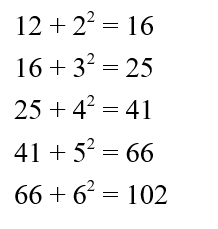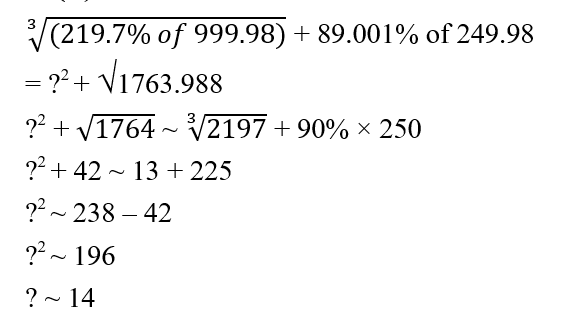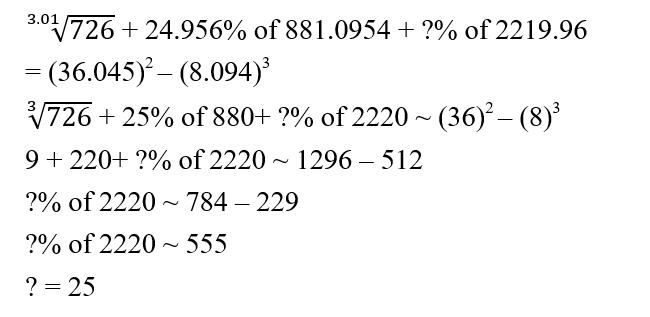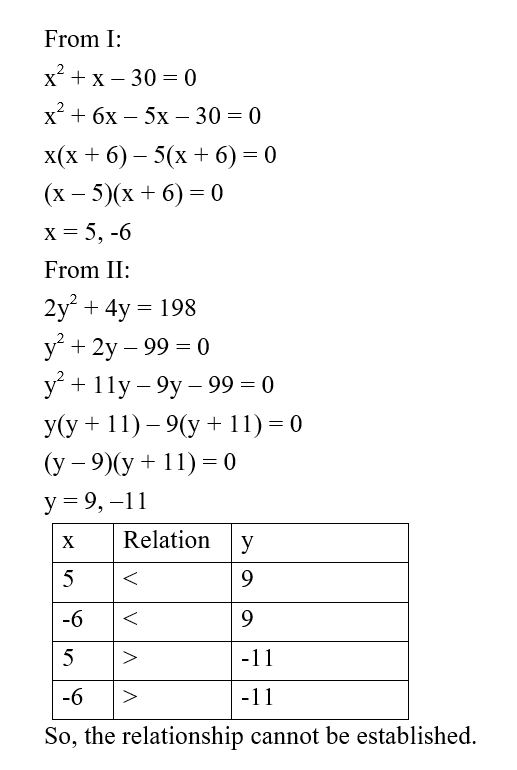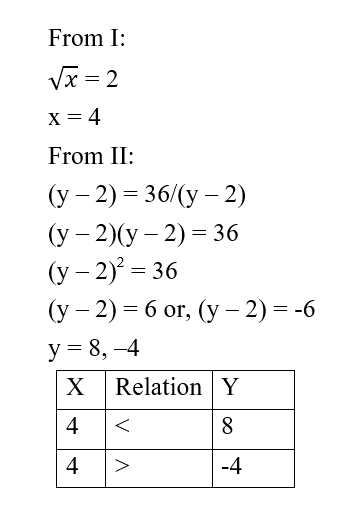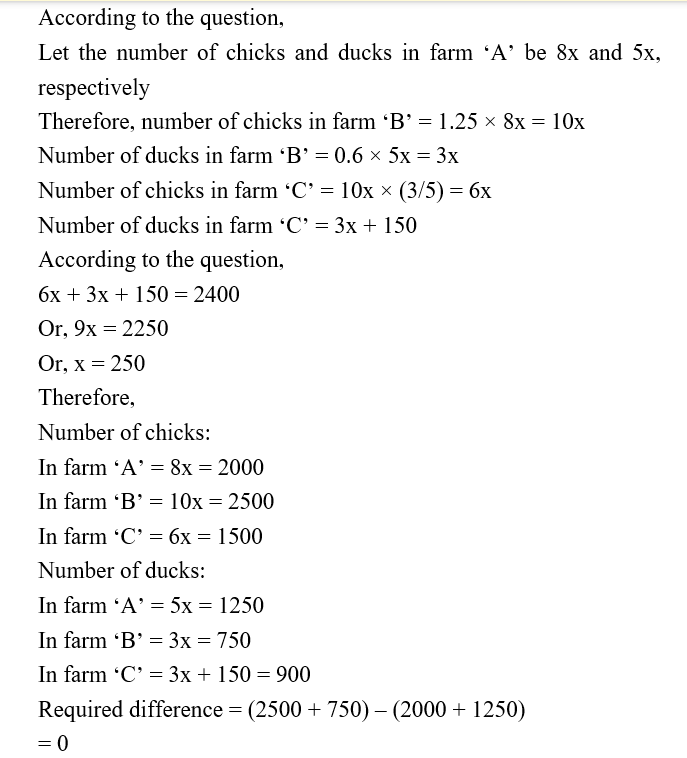Question 1:
Direction: What will come in the place of question mark (?) in the given expression?
निर्देश: दिए गए समीकरण में प्रश्नवाचक चिन्ह (?) के स्थान पर क्या आएगा?
12, ?, 25, 41, 66, 102
Question 2:
Direction: What will come in place of the question mark (?) in the following series?
निर्देश: निम्नलिखित श्रृंखला में प्रश्नवाचक चिन्ह (?) के स्थान पर क्या आएगा?
226, 215, 248, 193, 270, ?
Question 3:
Direction: What will come in place of the question mark (?) in the following series?
निर्देश: निम्नलिखित श्रृंखला में प्रश्नवाचक चिन्ह (?) के स्थान पर क्या आएगा?
170, 129, ?, 61, 32, 9
Question 4:
Direction: What approximate value will come in place of the question mark (?) in the following question? (Note: You are not expected to calculate the exact value.)
निर्देश: निम्नलिखित प्रश्न में प्रश्न चिह्न (?) के स्थान पर क्या अनुमानित मान आएगा? (नोट: आपको सटीक मान की गणना करने की आवश्यकता नहीं है।)

Question 5:
Direction: What approximate value will come in place of the question mark (?) in the following question? (Note: You are not expected to calculate the exact value.)
निर्देश: निम्नलिखित प्रश्न में प्रश्न चिह्न (?) के स्थान पर क्या अनुमानित मान आएगा? (नोट: आपको सटीक मान की गणना करने की आवश्यकता नहीं है।)

Question 6:
Direction: What approximate value will come in place of the question mark (?) in the following question? (Note: You are not expected to calculate the exact value.)
निर्देश: निम्नलिखित प्रश्न में प्रश्न चिह्न (?) के स्थान पर क्या अनुमानित मान आएगा? (नोट: आपको सटीक मान की गणना करने की आवश्यकता नहीं है।)

Question 7:
Perimeter of a rectangle is 50% more than that of a square of side 36 cm. If difference between length and breadth of the rectangle is 6 cm, then find the length of the rectangle.
एक आयत की परिधि 36 सेमी भुजा वाले वर्ग के परिधि से 50% अधिक है। यदि आयत की लंबाई और चौड़ाई के बीच का अंतर 6 सेमी है, तो आयत की लंबाई ज्ञात कीजिए।
Question 8: 
Question 9:
Direction: In the question, two equations I and II are given. You have to solve both the equations to establish the correct relation between x and y and choose the correct option.
निर्देश: प्रश्न में दो समीकरण I और II दिए गए हैं। आपको x और y के बीच सही संबंध स्थापित करने के लिए दोनों समीकरणों को हल करना है और सही विकल्प का चयन करना है।

Question 10:
Directions: Answer the questions based on the information given below.
निर्देश: नीचे दी गई जानकारी के आधार पर प्रश्नों के उत्तर दें।
The given data is about number of chicks and ducks in three different farms. The ratio of the number of chicks and ducks in farm ‘A’ is 8:5, respectively. The number of chicks and ducks in farm ‘B’ is 25% more and 40% less, respectively than that in farm ‘A’. The ratio of the number of chicks in farms ‘B’ and ‘C’ is 5:3, respectively. The number of ducks in farm ‘C’ is 150 more than that in farm ‘B’. Number of (chicks + ducks) in farm ‘C’ is 2400.
दी गई जानकारी तीन अलग-अलग फार्म में चूजों और बत्तखों की संख्या के बारे में है।फार्म ‘A’ में चूजों और बत्तखों की संख्या का अनुपात क्रमशः 8:5 है। फार्म ‘B’ में चूजों और बत्तखों की संख्या फार्म ‘A’ की तुलना में क्रमशः 25% अधिक और 40% कम है। फार्म ‘B’ और ‘C’ में चूजों की संख्या का अनुपात क्रमशः 5:3 है। फार्म 'C' में बत्तखों की संख्या फार्म ‘B’ की तुलना में 150 अधिक है। फार्म 'C' में (चूजे + बत्तख) की संख्या 2400 है।
Find difference between number of (chicks + ducks) in farms ‘A’ and that in farm ‘B’.
फार्म ‘A’ और फार्म ‘B’ में (चूजों + बत्तखों) की संख्या के बीच का अंतर ज्ञात कीजिए।

